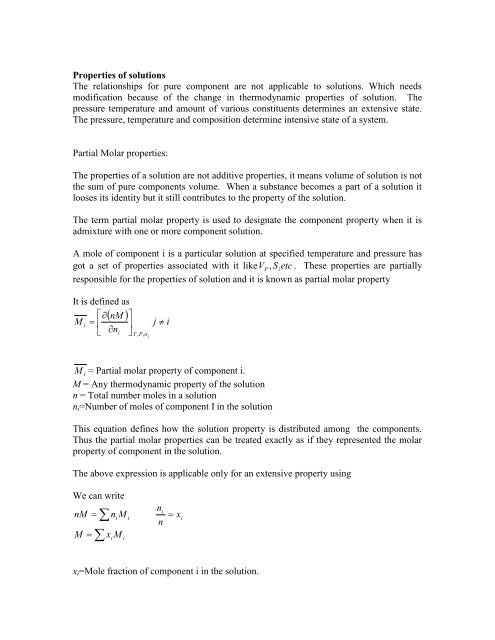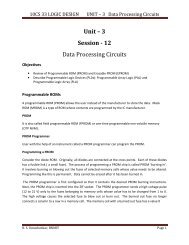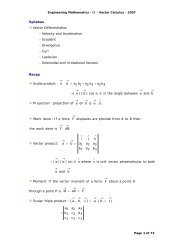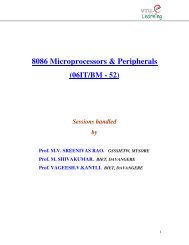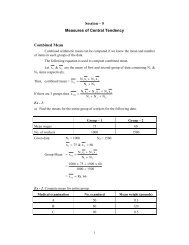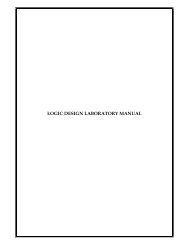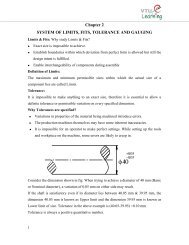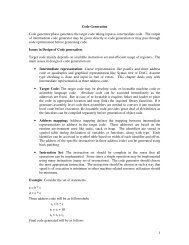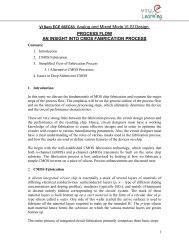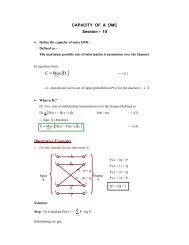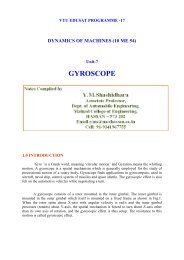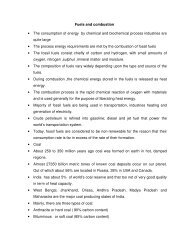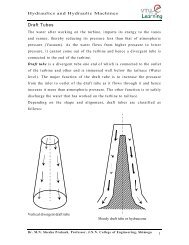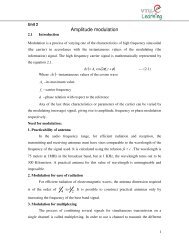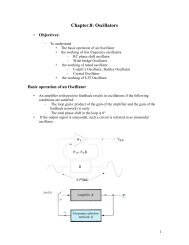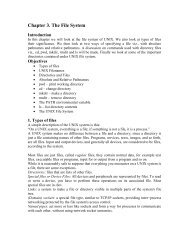Fugacity: It is derived from Latin, expressed as fleetness or escaping ...
Fugacity: It is derived from Latin, expressed as fleetness or escaping ...
Fugacity: It is derived from Latin, expressed as fleetness or escaping ...
You also want an ePaper? Increase the reach of your titles
YUMPU automatically turns print PDFs into web optimized ePapers that Google loves.
Properties of solutions<br />
The relationships f<strong>or</strong> pure component are not applicable to solutions. Which needs<br />
modification because of the change in thermodynamic properties of solution. The<br />
pressure temperature and amount of various constituents determines an extensive state.<br />
The pressure, temperature and composition determine intensive state of a system.<br />
Partial Molar properties:<br />
The properties of a solution are not additive properties, it means volume of solution <strong>is</strong> not<br />
the sum of pure components volume. When a substance becomes a part of a solution it<br />
looses its identity but it still contributes to the property of the solution.<br />
The term partial molar property <strong>is</strong> used to designate the component property when it <strong>is</strong><br />
admixture with one <strong>or</strong> m<strong>or</strong>e component solution.<br />
A mole of component i <strong>is</strong> a particular solution at specified temperature and pressure h<strong>as</strong><br />
got a set of properties <strong>as</strong>sociated with it likeVP , Sietc<br />
. These properties are partially<br />
responsible f<strong>or</strong> the properties of solution and it <strong>is</strong> known <strong>as</strong> partial molar property<br />
<strong>It</strong> <strong>is</strong> defined <strong>as</strong><br />
nM<br />
<br />
M i <br />
ni<br />
<br />
T , P,<br />
n<br />
j<br />
j i<br />
M i = Partial molar property of component i.<br />
M = Any thermodynamic property of the solution<br />
n = Total number moles in a solution<br />
ni=Number of moles of component I in the solution<br />
Th<strong>is</strong> equation defines how the solution property <strong>is</strong> d<strong>is</strong>tributed among the components.<br />
Thus the partial molar properties can be treated exactly <strong>as</strong> if they represented the molar<br />
property of component in the solution.<br />
The above expression <strong>is</strong> applicable only f<strong>or</strong> an extensive property using<br />
We can write<br />
<br />
x<br />
n<br />
<br />
n<br />
i i M n nM i<br />
xi<br />
M<br />
i i M<br />
xi=Mole fraction of component i in the solution.


